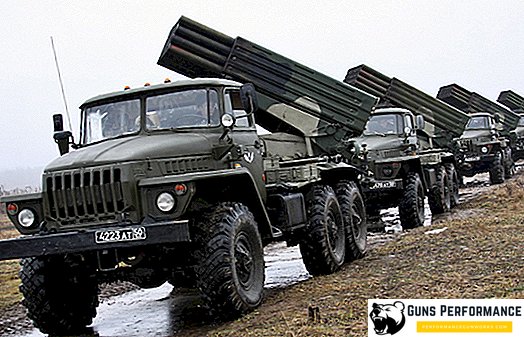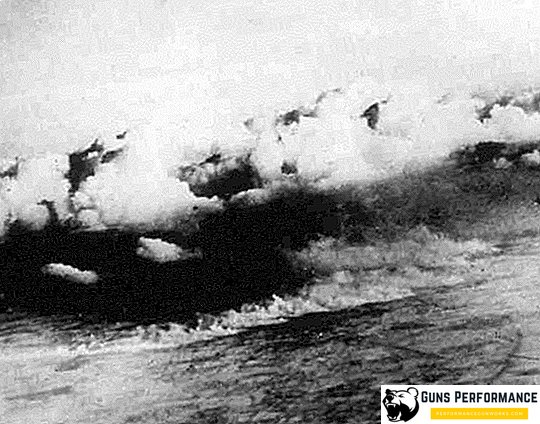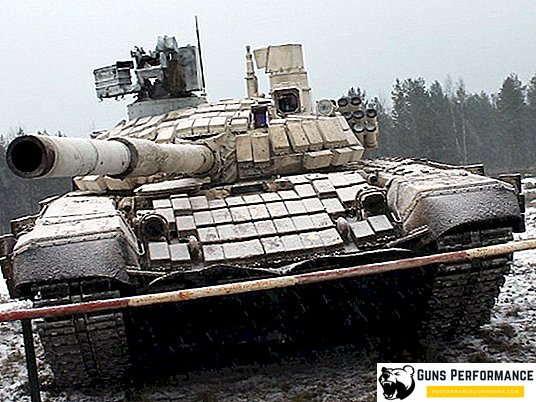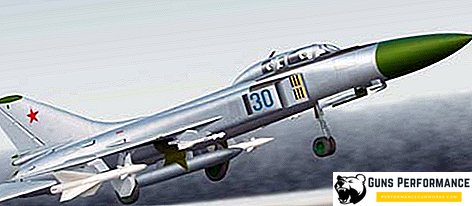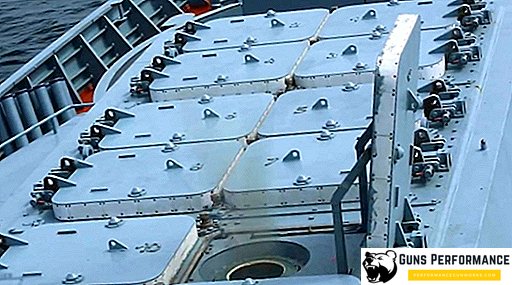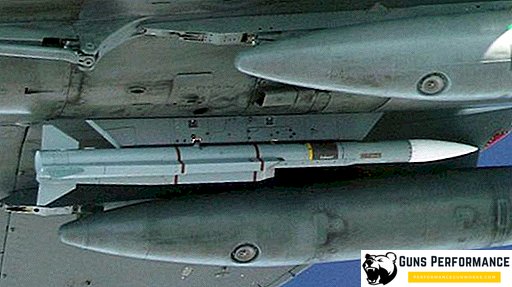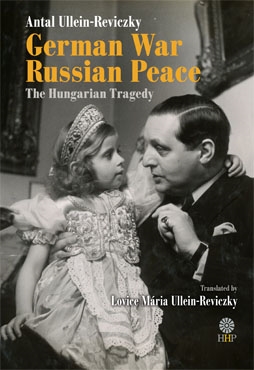At the beginning of the 20th century, differences between world powers reached their peak. A relatively long period without major European conflicts (from about the 1870s) made it possible to accumulate contradictions between the leading world powers. There was no single mechanism for resolving such issues, which inevitably led to "detente." It could only be war at that time.
Background and background of the First World War

The prehistory of the First World War dates back to the 19th century, when the German Empire gained strength and entered into colonial competition with other world powers. Germany, late for the colonial division, often had to conflict with other countries in order to secure a piece of the pie for African and Asian capital markets.
On the other hand, the decrepit Ottoman Empire also caused many inconveniences to the European powers, who sought to take part in the division of its inheritance. As a result, this tension resulted in the Tripolitanian war (as a result of which Italy seized Libya, which previously belonged to the Turks) and the two Balkan wars, during which Slavic nationalism in the Balkans reached its highest point.

Carefully followed the situation in the Balkans and Austria-Hungary. It was important for an empire losing prestige to regain respect and consolidate diverse national groups. It was for this purpose, as well as for an important strategic bridgehead, from which Serbia could be threatened, in 1908 Austrian occupied Bosnia, and later included its composition.

At the beginning of the 20th century, two military-political blocs almost completely took shape in Europe: the Entente (Russia, France, Great Britain) and the Triple Alliance (Germany, Austria-Hungary and Italy). These two alliances united states primarily by their foreign policy goals. Thus, the Entente was mainly interested in preserving the colonial redistribution of the world, with slight changes in its favor (for example, the division of the German colonial empire), while Germany and Austria-Hungary wanted a complete redistribution of the colonies, the achievement of economic and military hegemony in Europe and expanding their markets.
Thus, by 1914, the situation in Europe had become rather tense. The interests of the great powers collided in almost all areas: trade, economic, military and diplomatic. In fact, in the spring of 1914, the war became inevitable, and only a “push” was needed, a pretext that would lead to conflict.

On June 28, 1914, in the city of Sarajevo (Bosnia), the heir to the throne of Austria-Hungary, Archduke Franz Ferdinand, was killed along with his wife. The killer was the Serbian nationalist Gavrilo Princip, who belonged to the organization Young Bosnia. The reaction of Austria was not long in coming. Already on July 23, the Austrian government, believing that Serbia was behind the “Young Bosnia” organization, presented an ultimatum to the Serbian government, according to which Serbia was required to stop any anti-Austrian actions, prohibit anti-Austrian organizations, and allow the Austrian police to enter the country investigation.

The Serbian government, rightly believing that this ultimatum is an aggressive diplomatic attempt by Austria-Hungary to limit or completely destroy Serbian sovereignty, decided to satisfy almost all Austrian requirements except one: the admission of the Austrian police to the territory of Serbia was clearly unacceptable. This refusal for the Austro-Hungarian government was enough to accuse Serbia of insincerity and preparation of provocations against Austria-Hungary and begin to concentrate troops on the border with it. Two days later, on July 28, 1914, Austria-Hungary declared war on Serbia.
Objectives and plans of the parties in the First World War

The military doctrine of Germany to the beginning of World War I was the famous Schlieffen Plan. The plan envisaged a rapid crushing defeat for France, as in 1871. The French campaign was supposed to be completed within 40 days, before Russia could mobilize and concentrate its army near the eastern borders of the German Empire. After the defeat of France, the German command planned to quickly transfer troops to the Russian borders and launch a victorious offensive there. Victory, therefore, should have been achieved in a very short period of time - from four months to six months.
The plans of Austria-Hungary consisted of a victorious offensive against Serbia and at the same time a strong defense against Russia in Galicia. After the defeat of the Serbian army was supposed to transfer all the available troops against Russia and together with Germany to carry out its defeat.
The military plans of the Entente also envisaged the achievement of a military victory in the shortest possible time. So. It was assumed that Germany would not be able to withstand for a long time wars on two fronts, especially with the active offensive actions of France and Russia on land and the naval blockade by the UK.
The beginning of the First World War - August 1914

Russia, which traditionally supported Serbia, could not remain aloof from the outbreak of the conflict. On 29 July, a telegram from Emperor Nicholas II was sent to the German Kaiser Wilhelm II, proposing to solve the Austro-Serbian conflict by international arbitration in The Hague. However, the German Kaiser, fascinated by the idea of hegemony in Europe, left his cousin's telegram unanswered.
Meanwhile, mobilization began in the Russian Empire. It was initially held exclusively against Austria-Hungary, but after Germany clearly expressed its position, the mobilization measures became universal. The reaction of the German Empire to the Russian mobilization was an ultimatum demanded to stop these massive preparations under the threat of war. However, it was already impossible to stop mobilization in Russia. As a result, on August 1, 1914, Germany declared war on Russia.
Simultaneously with these events, the German General Staff initiated the implementation of the Schlieffen Plan. On the morning of August 1, German troops invaded Luxembourg and the next day fully occupied the state. At the same time, an ultimatum was presented to the Belgian government. It consisted in demanding unimpeded passage of German troops through the territory of the Belgian state for actions against France. However, the Belgian government refused the ultimatum.
A day later, on August 3, 1914, Germany declared war on France, and the next day - on Belgium. At the same time, Great Britain entered the war on the side of Russia and France. August 6, Austria-Hungary declared war on Russia. Italy unexpectedly for the countries of the Triple Alliance refused to join the war.
World War I inflamed - August-November 1914
By the beginning of World War I, the German army was not fully prepared for active hostilities. However, two days after the declaration of war, Germany managed to seize the cities of Kalisz and Czestochowa in Poland. At the same time, the Russian forces with the forces of the two armies (1st and 2nd) launched an offensive in East Prussia with the aim of seizing Koenigsberg and leveling the front line from the north in order to eliminate the unsuccessful configuration of the pre-war borders.
Initially, the Russian offensive was developing quite successfully, but soon because of the lack of coordination of the actions of the two Russian armies, the 1st Army fell under a powerful German flank attack and lost about half of its personnel. The army commander Samsonov shot himself dead, and the army itself by September 3, 1914 retreated to its original positions. From the beginning of September, Russian troops in the northwestern direction went over to the defensive.

At the same time, the Russian army launched a major offensive against the Austro-Hungarian troops in Galicia. In this sector of the front, five Austro-Hungarian fought against the five Russian armies. The fighting here initially developed not entirely favorable for the Russian side: the Austrian troops put up fierce resistance on the southern flank, thanks to which the Russian army was forced to retreat to its original positions in mid-August. However, soon after the fierce battles, the Russian army managed to seize Lvov on August 21. After this, the Austrian army began to withdraw in a southwesterly direction, which soon turned into a real flight. The catastrophe in front of the Austro-Hungarian troops rose to its full height. Only by mid-September, the offensive of the Russian army in Galicia was completed about 150 kilometers west of Lviv. In the rear of the Russian troops was also a strategically important fortress of Przemysl, in which about 100 thousand Austrian soldiers took refuge. The siege of the fortress continued until 1915.
After the events in East Prussia and Galicia, the German command decided to launch an offensive with the aim of eliminating the Warsaw salient and leveling the front line by 1914. Already on September 15, the Warsaw-Ivangorod operation began, during which the German troops came close to Warsaw, but the Russian army was able to push them back to their original position with powerful counterstrikes.
In the West, on August 4, German troops launched an offensive on the territory of Belgium. Initially, the Germans did not encounter a serious defense, and the centers of resistance treated them with forward troops. August 20, occupying the capital of Belgium, Brussels, the German army came into contact with the French and British forces. Thus, the so-called Frontier Battle began. In the course of the battle, the German army managed to inflict a serious defeat on the forces of the Allies and capture the north of France and most of the territory of Belgium.
By the beginning of September 1914, the situation on the Western Front had become threatening for the Allies. German troops were 100 kilometers from Paris, and the French government fled to Bordeaux. However, at the same time, the Germans acted with the full exertion of forces that all melted away. For the final blow, the Germans decided to make a deep bypass of the forces of the allies, covering Paris from the north. However, the flanks of the German assault force were not covered, which the Union leadership took advantage of. As a result of this battle, part of the German troops were defeated, and the chance to take Paris in the autumn of 1914 was lost. The Miracle on the Marne allowed the Allies to regroup and build solid defenses.
After the failure near Paris, the German command launched an offensive towards the coast of the North Sea in order to reach the Anglo-French forces. At the same time, the Allied forces were also moving towards the sea. This period, which lasted from mid-September to mid-November 1914, was called "Running to the Sea".
In the Balkan theater of war, events for the Central Powers developed extremely poorly. From the very beginning of the war, the Serbian army put up fierce resistance from the Austro-Hungarian army, which managed to capture Belgrade only in early December. However, a week later, the Serbs managed to return the capital back.
Entry into the war of the Ottoman Empire and the prolongation of the conflict (November 1914 - January 1915)
From the very beginning of the First World War, the government of the Ottoman Empire closely followed its course. At the same time, there was no consensus on which side to speak, the government of the country was not. However, it was clear that the Ottoman Empire could not refrain from entering into conflict.
In the course of numerous diplomatic maneuvers and intrigues in the Turkish government, supporters of the pro-German position took over. As a result, virtually the entire country and the army were under the control of the German generals. The Ottoman fleet, without declaring war, on October 30, 1914, fired on a number of Russian Black Sea ports, which was immediately used by Russia as a pretext for declaring war, which happened on November 2. A few days later, the Ottoman Empire was declared a war by France and Great Britain.
Simultaneously with these events, the offensive of the Ottoman army began in the Caucasus, aimed at capturing the cities of Kars and Batumi, and in the long term, the whole of Transcaucasia. However, here the Russian troops managed to first stop and then throw the enemy over the border line. As a result, the Ottoman Empire was also drawn into a large-scale war with no hope of a quick victory.
From October 1914 on the Western Front, the troops occupied positional defense, which had a significant impact on the next 4 years of war. Stabilization of the front and the lack of offensive capabilities on both sides led to the construction of a strong and deep defense by the German and Anglo-French forces.
World War I - 1915

1915 on the Eastern Front turned out to be more active than in the West. First of all, this is explained by the fact that the German command in planning combat operations for 1915 decided to strike the main blow in the East and lead Russia out of the war.
In the winter of 1915, German troops launched an offensive in Poland in the Avgustov region. Here, despite initial successes, the Germans faced stubborn resistance from the Russian troops and could not achieve decisive success. After these failures, the German leadership decided to shift the direction of the main strike south to the region of the south of the Carpathians and Bukovina.
This strike almost immediately reached the goal, and the German troops managed to break through the Russian front in the area of Gorlice. As a result, in order to avoid encirclement, the Russian army had to begin a retreat in order to level the front line. This departure, starting April 22, lasted 2 months. As a result, Russian troops lost a large territory in Poland and Galicia, while Austro-German forces almost came close to Warsaw. However, the main events of the campaign in 1915 were still ahead.
The German command, although it managed to achieve quite good operational success, but still failed to bring down the Russian front. It was the goal of neutralizing Russia from the beginning of June that the planning of a new offensive began, which, according to the plan of the German leadership, should lead to the complete collapse of the Russian front and the early withdrawal of the Russians from the war. It was supposed to deliver two blows under the base of the Warsaw salient to encircle or oust the enemy's troops from this salient. At the same time, it was decided to attack the Baltic States in order to divert at least part of the Russian forces from the central sector of the front.
On June 13, 1915, the German offensive began, and a few days later the Russian front was broken through. In order to avoid encirclement near Warsaw, the Russian army began to retreat to the east in order to create a new united front. As a result of this “Great Retreat,” the Russian troops left Warsaw, Grodno, Brest-Litovsk, and the front stabilized only by autumn on the Dubno-Baranovichi-Dvinsk line. In the Baltics, the Germans occupied the whole territory of Lithuania and came close to Riga. After these operations on the Eastern Front of the First World War until 1916, there was a lull.
On the Caucasian front during 1915, hostilities spread to the territory of Persia, which, after long diplomatic maneuvers, took the side of the Entente.
On the Western Front, 1915 was marked by a reduced activity of German troops with a higher activity of the Anglo-French. So, at the beginning of the year, hostilities took place only in the Artois region, but they did not lead to any noticeable results. In terms of their intensity, these positional actions, however, could in no way claim the status of a serious operation.

The unsuccessful attempts of the Allies to break through the German front led, in turn, to a German offensive with limited objectives in the Ypres region (Belgium). Here, German troops used poison gases for the first time in history, which turned out to be very unexpected and stunning for their adversary. However, not having sufficient reserves to develop success, the Germans were soon forced to stop the offensive, achieving very modest results (their advance was only 5 to 10 kilometers).
In early May 1915, the Allies launched a new offensive in Artois, which, according to the plan of their command, would lead to the liberation of a larger territory of France and a major defeat of the German troops. However, neither thorough artillery preparation (which lasted 6 days), nor large forces (about 30 divisions concentrated on an area of 30 kilometers) did not allow the Anglo-French leadership to achieve victory. Not in the least, this was due to the fact that German troops here built a deep and powerful defense, which was a reliable tool against allied frontal attacks.
The same result also ended the larger offensive of the Anglo-French troops in Champagne, which began on September 25, 1915 and lasted only 12 days. During this offensive, the Allies managed to advance only 3-5 kilometers with a loss of 200 thousand people. Немцы понесли потери в 140 тысяч человек.
23 мая 1915 года Италия вступила в Первую мировую войну на стороне Антанты. Это решение далось итальянскому руководству нелегко: ещё год назад, накануне войны, страна была союзницей Центральных держав, однако удержалась от вступления в конфликт. С вступлением в войну Италии появился новый - Итальянский - фронт, на который Австро-Венгрии пришлось отвлекать крупные силы. В течение 1915 года на данном фронте существенных изменений не произошло.
На Ближнем Востоке союзное командование спланировало проведение в 1915 году операций c целью вывести из войны Османскую империю и окончательно укрепить своё превосходство на Средиземном море. Согласно плану, союзный флот должен был прорваться к проливу Босфор, обстрелять Стамбул и береговые батареи турок, и доказав туркам превосходство Антанты, вынудить османское правительство капитулировать.
Однако с самого начала эта операция развивалась для союзников неудачно. Уже в конце февраля, во время рейда союзной эскадры против Стамбула, было потеряно три корабля, а турецкая береговая оборона так и не была подавлена. После этого было принято решение высадить экспедиционный корпус в районе Стамбула и стремительным наступлением вывести страну из войны.

Высадка союзнических войск началась 25 апреля 1915 года. Но и здесь союзники столкнулись с ожесточённой обороной турок, вследствие чего высадиться и закрепиться удалось лишь в районе Галлиполи, примерно в 100 километрах от османской столицы. Высаженные здесь австралийские и новозеландские части (АНЗАК) яростно атаковали турецкие войска вплоть до конца года, когда стала абсолютно ясной полная бесперспективность десанта в Дарданеллах. В результате уже в январе 1916 года экспедиционные силы союзников отсюда были эвакуированы.
На Балканском театре военных действий исход кампании 1915 года определился двумя факторами. Первым фактором стало "Великое отступление" русской армии, ввиду которого Австро-Венгрии удалось перебросить часть войск из Галиции против Сербии. Вторым фактором стало вступление в войну на стороне Центральных держав Болгарии, ободрённой удачей османских войск в Галлиполи и внезапно нанесшей удар Сербии в спину. Этот удар сербская армия отразить не смогла, что привело к полному краху сербского фронта и занятию к концу декабря австрийскими войсками территории Сербии. Тем не менее, сербская армия, сохранив личный состав, сумела организованно отступить на территорию Албании и в дальнейшем участвовала в боях против австрийских, немецких и болгарских войск.
Ход первой мировой войны в 1916 году

1916 год ознаменовался пассивной тактикой Германии на Востоке и более активной - на Западе. Не добившись стратегической победы на Восточном фронте, германское руководство приняло решение основные усилия в кампании 1916 года сосредоточить на Западе, чтобы вывести Францию из войны и перебросив крупные силы на Восток, добиться военной победы и над Россией.
Это привело к тому, что первые два месяца года на Восточном фронте активных боевых действий практически не велось. Тем не менее, русское командование планировало крупные наступательные действия на западном и юго-западном направлениях, а резкий скачок военного производства делал успех на фронте весьма возможным. Вообще весь 1916 год в России прошёл под знаком всеобщего воодушевления и высокого боевого духа.

В марте 1916 года русское командование, идя навстречу пожеланиям союзников о проведении отвлекающей операции, предприняло крупное наступление с целью освобождения территории Белоруссии и Прибалтики и вытеснения немецких войск обратно в Восточную Пруссию. Однако это наступление, начавшееся на два месяца ранее запланированного срока, не смогло достичь поставленных целей. Русская армия потеряла примерно 78 тысяч человек, в то время как германская - примерно 40 тысяч. Тем не менее, русскому командованию удалось, возможно, решить исход войны в пользу союзников: немецкое наступление на Западе, которое к тому времени начинало приобретать критический оборот для Антанты, было ослаблено и постепенно начало выдыхаться.
Положение на русско-германском фронте оставалось спокойным вплоть до июня, когда русское командование начало новую операцию. Она проводилась силами Юго-Западного фронта, и её целью было нанести поражение австро-германским силам на данном направлении и освободить часть русской территории. Примечательно, что и эта операция была проведена по просьбе союзников с целью отвлечь вражеские войска от угрожаемых участков. Однако именно это русское наступление стало одной из наиболее удачных операций русской армии в Первой мировой войне.
Наступление началось 4 июня 1916 года, и уже спустя пять дней австро-венгерский фронт был прорван в нескольких мечтах. Противник начал отход, чередующийся с контрударами. Именно вследствие этих контрударов фронт удалось удержать от полного крушения, но лишь на короткое время: уже в начале июля линия фронта на юго-западе была прорвана, и войска Центральных держав начали отступление, неся огромные потери.
Одновременно с наступлением на юго-западном направлении русские войска наносили главный удар на западном направлении. Однако здесь немецкие войска сумели организовать прочную оборону, что привело к большим потерям в русской армии без заметного результата. После этих неудач русское командование приняло решение о смещении главного удара с Западного на Юго-Западный фронт.
Новый этап наступления начался 28 июля 1916 года. Русские войска вновь нанесли крупное поражение силам противника и в августе овладели городами Станислав, Броды, Луцк. Положение австро-германских войск здесь стало настолько критическим, что в Галицию перебрасывались даже турецкие войска. Тем не менее, уже к началу сентября 1916 года русское командование столкнулось с упорной обороной противника на Волыни, что привело к большим потерям среди русских войск и как следствие к тому, что наступление выдохлось. Наступление, поставившее Австро-Венгрию на грань катастрофы, получило имя в честь своего исполнителя - Брусиловский прорыв.
На Кавказском фронте русским войскам удалось овладеть турецкими городами Эрзурум и Трабзон и выйти на линию в 150-200 километрах от границы.
На Западном фронте в 1916 году германское командование предприняло наступательную операцию, позднее ставшую известной как битва за Верден. В районе этой крепости располагалась мощная группировка войск Антанты, а конфигурация фронта, имевшая вид выступа в сторону германских позиций, навела немецкое руководство на мысль окружить и уничтожить эту группировку.
Германское наступление, которому предшествовала чрезвычайно интенсивная артиллерийская подготовка, началось 21 февраля. В самом начале этого наступления германской армии удалось продвинуться на 5-8 километров вглубь позиций союзников, но упорное сопротивление англо-французских войск, нанесших ощутимые потери немцам, так и не позволило добиться полной победы. Вскоре оно было остановлено, и немцам пришлось вести упорные бои уже за удержание той территории, что им удалось захватить в начале сражения. Однако всё было тщетно - фактически с апреля 1916 года Верденское сражение было Германией проиграно, но еще продолжалось до конца года. При этом потери немцев были примерно в два раза меньше, чем у англо-французских сил.
Ещё одним важным событием 1916 года стало вступление в войну на стороне держав Антанты Румынии (17 августа). Румынское правительство, воодушевлённое разгромом австро-германских войск в ходе Брусиловского прорыва русской армии, планировало увеличить территорию страны за счёт Австро-Венгрии (Трансильвания) и Болгарии (Добруджа). Однако невысокие боевые качества румынской армии, неудачная для Румынии конфигурация границ и близость крупных австро-германо-болгарских сил не позволили этим планам исполниться. Если сначала румынской армии удалось продвинуться на 5-10 км вглубь австрийской территории, то затем, после сосредоточения вражеских армий, румынские силы были разгромлены, и к концу года страна почти полностью оккупирована.
Боевые действия в 1917 году
Результаты кампании 1916 года оказали большое влияние на кампанию 1917 года. Так, «Верденская мясорубка» не прошла даром для Германии, и в 1917 год страна вступила с практически полностью истощёнными людскими ресурсами и тяжёлым продовольственным положением. Становилось ясно, что если Центральным державам не удастся в ближайшее время одержать победу над противниками, то война закончится для них поражением. В то же время Антанта на 1917 год планировала крупное наступление с целью скорейшей победы над Германией и её союзниками.
В свою очередь, для стран Антанты 1917 год сулил поистине гигантские перспективы: истощение Центральных держав и казавшееся неминуемым вступление в войну США должно было окончательно переломить ситуацию в пользу союзников. На Петроградской конференции Антанты, проходившей с 1 по 20 февраля 1917 года, активно обсуждалась обстановка на фронте и планы действий. Однако неофициально также обсуждалась и ситуация в России, которая с каждым днём ухудшалась.
В конце концов, 27 февраля революционная смута в Российской империи достигла своего пика, и грянула Февральская революция. Это событие наряду с моральным разложением русской армии практически лишило Антанту активного союзника. И хоть русская армия все еще занимала свои позиции на фронте, становилось ясно, что наступать она уже не сможет.
В это время отрёкся от престола император Николай II, и Россия перестала быть империей. Новое временное правительство Российской республики приняло решение продолжать войну, не разрывая союз с Антантой, чтобы довести боевые действия до победного конца и тем самым всё-таки оказаться в стане победителей. Подготовка к наступлению проводилась грандиозная, а само наступление должно было стать «торжеством русской революции».
Это наступление началось 16 июня 1917 года в полосе Юго-Западного фронта, и в первые дни русской армии сопутствовал успех. Однако затем, ввиду катастрофически низкой дисциплины в русской армии и по причине высоких потерь Июньское наступление «забуксовало». В итоге к началу июля русские войска исчерпали наступательный порыв и были вынуждены перейти к обороне.
Центральные державы не замедлили воспользоваться истощением русской армии. Уже 6 июля началось австро-германское контрнаступление, которому за считанные дни удалось вернуть оставленные с июня 1917 года территории, а затем и продвинуться вглубь русской территории. Русское отступление, сначала осуществлявшееся достаточно организованно, вскоре приобрело катастрофический характер. Дивизии разбегались при виде противника, войска отходили без приказов. В такой обстановке становилось всё яснее, что ни о каких активных действиях со стороны русской армии речи быть не может.
После этих неудач в наступление перешли русские войска на других направлениях. Однако как на Северо-Западном, так и на Западном фронтах, ввиду полного морального разложения они попросту не смогли достичь сколько-либо значимых успехов. Наиболее удачно вначале развивалось наступление в Румынии, где русские войска не имели практически никаких признаков разложения. Однако на фоне неудач на других фронтах русское командование вскоре остановило наступление и здесь.
После этого до самого окончания войны на Восточном фронте русская армия больше не предпринимала серьёзных попыток наступления да и вообще сопротивления силам Центральных держав. Октябрьская революция и свирепая борьба за власть лишь усугубили ситуацию. Однако и германская армия не могла больше вести активных боевых действий на Восточном фронте. Имели место лишь отдельные локальные операции по занятию отдельных населённых пунктов.
В апреле 1917 года в войну против Германии включились Соединённые Штаты Америки. Их вступление в войну было обусловлено более близкими интересами со странами Антанты, а также агрессивной подводной войной со стороны Германии, в результате которой гибли американские граждане. Вступление в войну США окончательно изменило соотношение сил в Первой мировой войне в пользу стран Антанты и сделало ее победу неизбежной.

На Ближневосточном театре военных действий британская армия перешла в решительное наступление против Османской империи. В результате этого от турок была очищена почти вся Палестина и Месопотамия. Одновременно с этим на Аравийском полуострове против Османской империи было поднято восстание с целью создания независимого арабского государства. В результате кампании 1917 года положение Османской империи стало поистине критическим, а ее армия была деморализована.
Первая мировая война - 1918 год
В начале 1918 года германское руководство, несмотря на подписанное ранее с Советской Россией перемирие, предприняло локальное наступление в направлении Петрограда. В районе Пскова и Нарвы путь им преградили отряды Красной гвардии, с которыми 23-25 февраля произошли боевые столкновения, впоследствии ставшие известными как дата рождения Красной Армии. Однако несмотря на официальную советскую версию о победе отрядов Красной гвардии над немцами, реальный исход боёв является дискуссионным, так как красные отряды были вынуждены отступить к Гатчине, что в случае победы над германскими войсками было бы бессмысленно.

Советское правительство, понимая шаткость перемирия, было вынуждено подписать мирный договор с Германией. Это соглашение было подписано в Брест-Литовске 3 марта 1918 года. Согласно Брестскому миру, под контроль Германии передавались Украина, Белоруссия и Прибалтика, а также признавалась независимость Польши и Финляндии. Дополнительно кайзеровская Германия получала огромную контрибуцию ресурсами и деньгами, что по сути позволило ей продлить свою агонию до ноября 1918 года.



